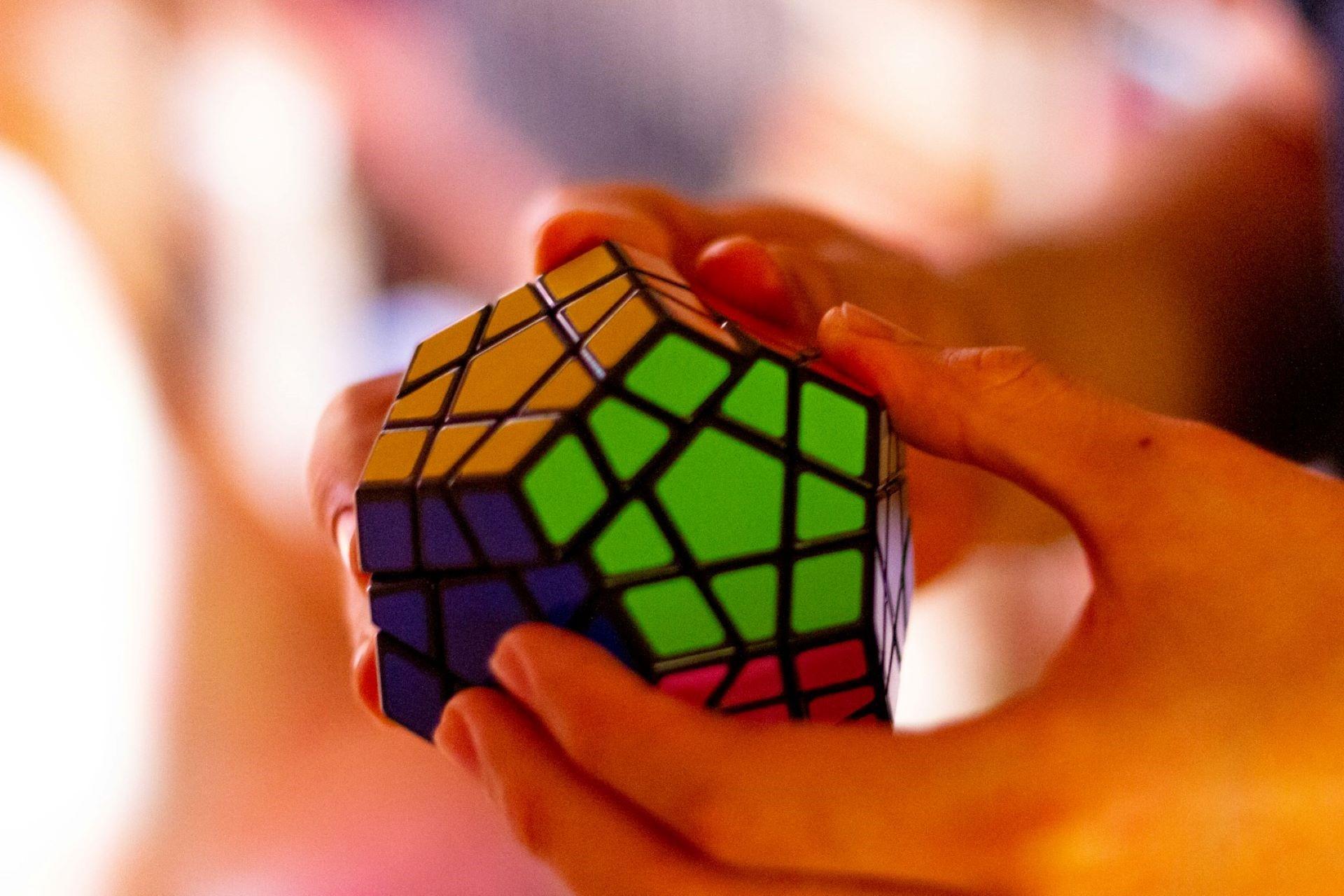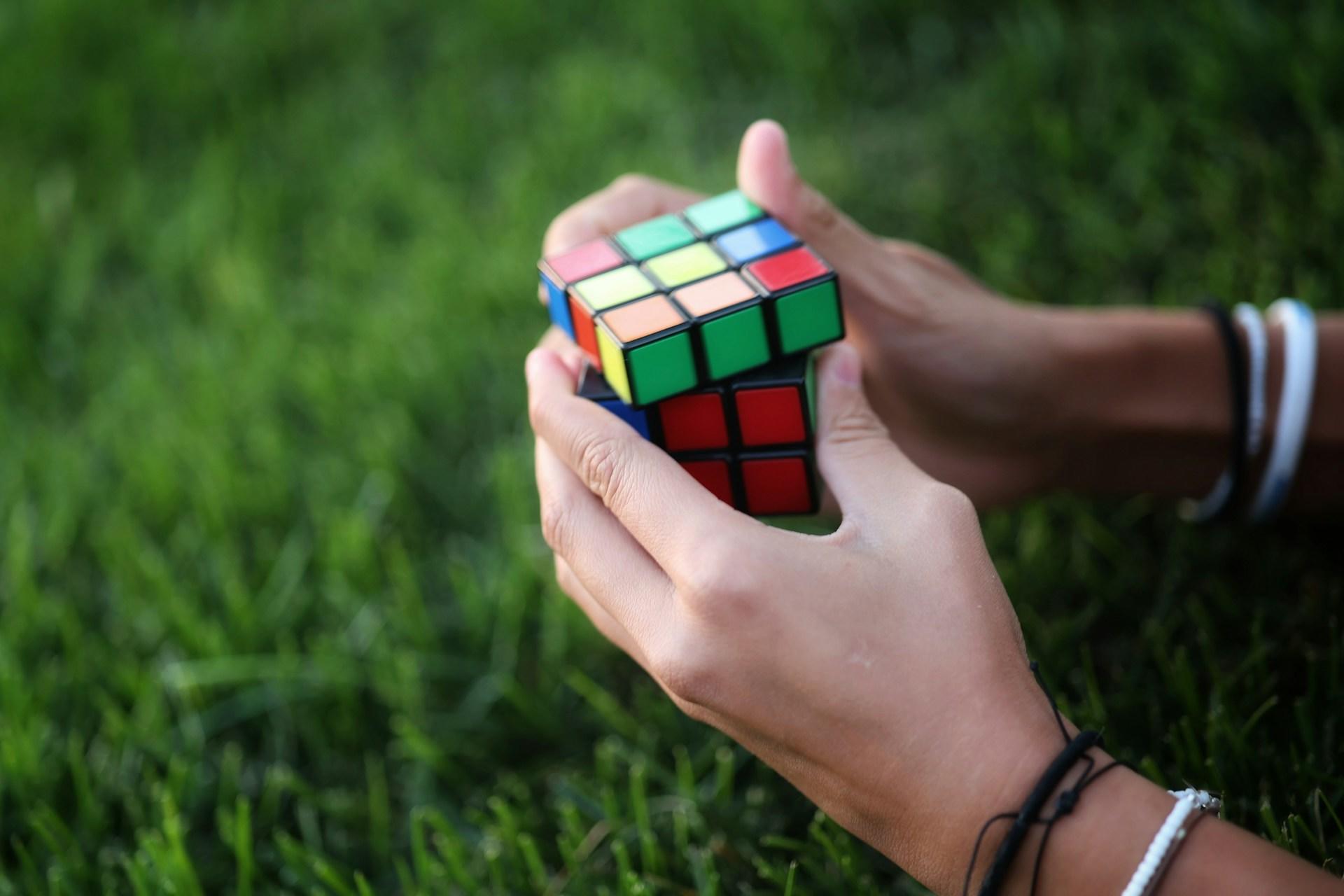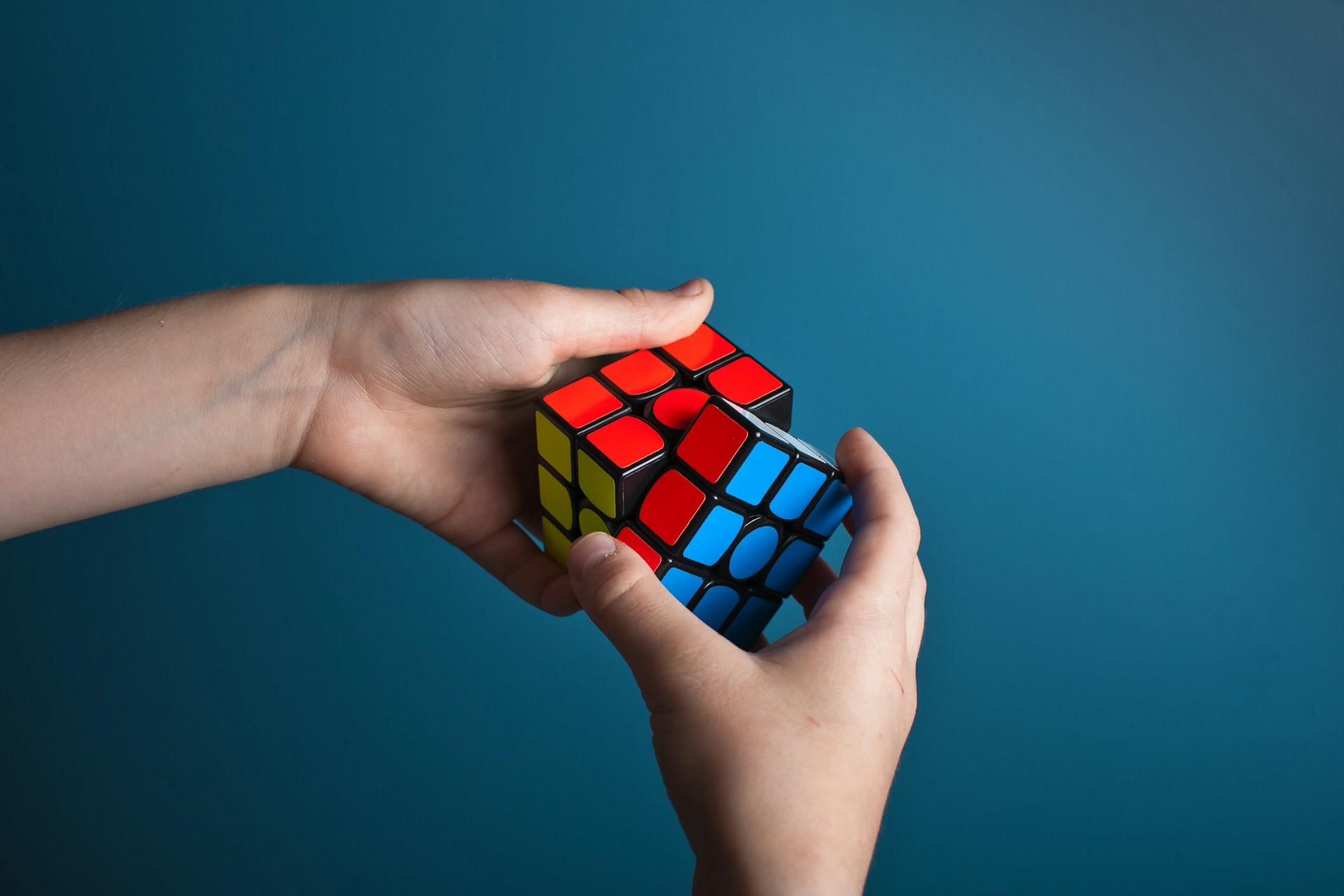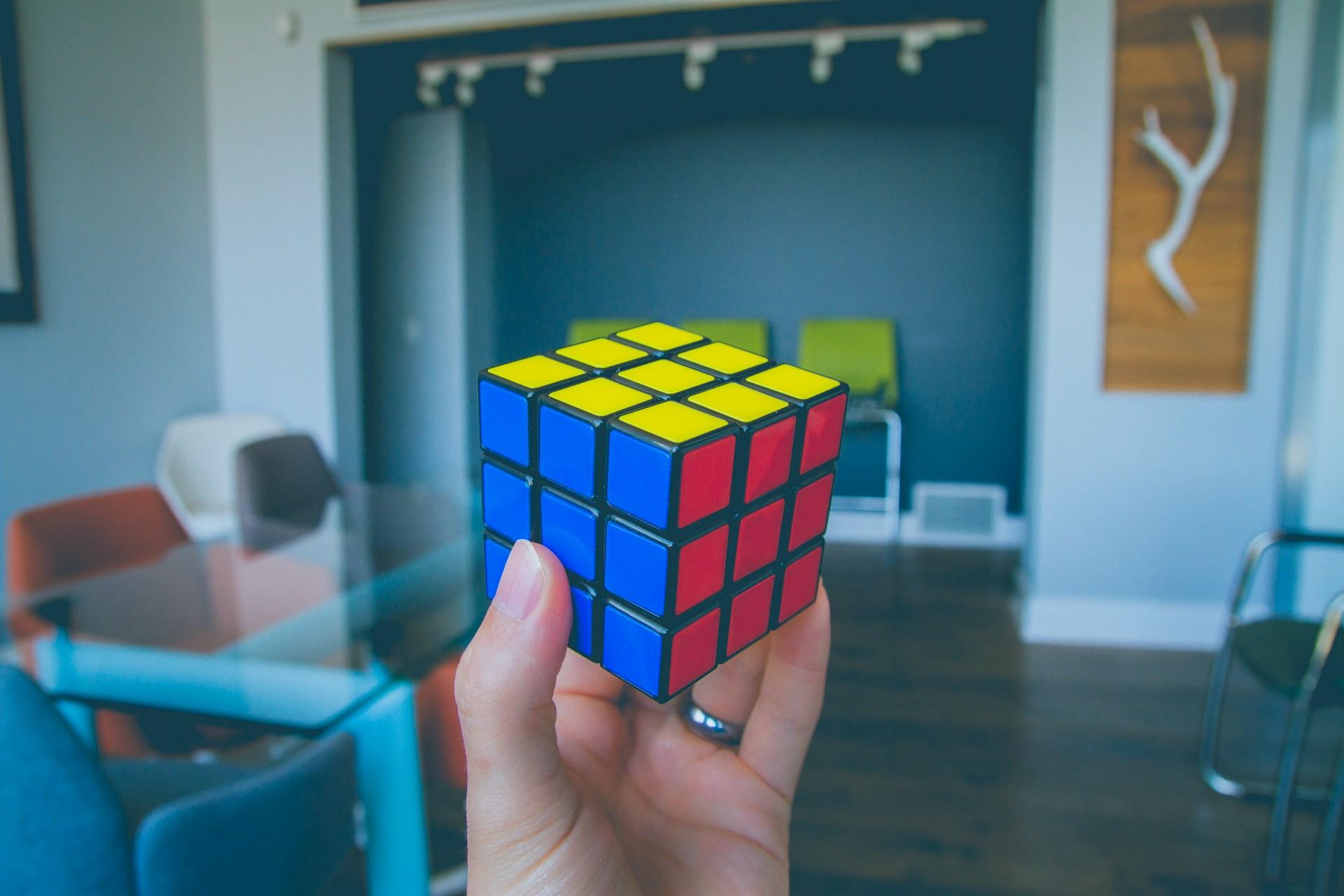The Rubik's Cube (or nonproprietary "puzzle cube") is one of the most popular puzzles in the world. Although it has only existed since the 1970s, its popularity exploded in the 1980s and became synonymous with the decade.
If you've spent decades trying to solve a Rubik's Cube to no avail, you're in luck. Here, we'll be going through some of the most accessible types of Rubik's and puzzle cubes so you can start solving them today!

The Best Rubik's and Puzzle Cubes for Beginners
The easiest way for beginners to solve a Rubik's Cube is to start with other cubes. The standard Rubik's Cube is the 3x3 puzzle cube, and certain puzzle and speed cubes also use this configuration.

Here are some of the alternatives that are typically easier to solve.
Redi Cube
The Redi Cube is another popular puzzle cube with several challenging ways to solve it. It differs from a standard puzzle cube in that the parts twist around the vertices (the corners) of each face rather than parallel to the edges like with a typical Rubik's Cube.
With fewer pieces (only 8 squares per face), the Redi Cube is a good option for those new to puzzle cubes.
Shape: Cube
Faces: 6
Movable Parts: Twists around vertices (corners)
Difficulty: Easier than a standard Rubik's Cube
Here's a quick video on how to solve a Redi Cube.
Floppy Cube
The Floppy Cube is a 3x3x1 puzzle, with two faces with 9 squares and 4 faces simply rows of 3 squares.
Calling the Floppy Cube a cube is a misnomer because it's flat compared to other Rubik's and puzzle cubes.
With fewer movable squares than the Redi Cube and the standard Rubik's Cube, this puzzle can be solved in as few as 8 moves.
It's a great puzzle for those who are completely new to puzzle cubes, as it allows you to understand some of the basic concepts of solving puzzle cubes with fewer moving parts to worry about.
Floppy Cube
Here's a video on how to solve a Floppy Cube.
Gear Ball
The Gear Ball is a rounded version of the Rubik's Cube. There are still six "faces", though they're not really faces if they're in a circle. That said, the Gear Ball is divided into six clear sections that are solved to be each made up of parts of the same color.
With fewer permutations, the Gear Ball is more straightforward to solve than a standard 3x3x3 Rubik's Cube.
Gear Ball
Here's how to solve a Gear Ball.
Pyramix Duo
You're likely getting the idea by now that to simplify a Rubik's Cube, you need to reduce the number of variable parts by reducing the number of squares per face or, better yet, reducing the number of faces altogether.
The Pyramix Duo isn't a cube, but it isn't a pyramid, either. Instead, it's a tetrahedron. After all, a pyramid has a square base, whereas the Pyramix Duo is made up of four triangular faces.
These faces comprise four colored pieces: a center piece and three more pieces for each vertex.
Fewer variations mean the Pyramix Duo is easier to solve than larger and more complex puzzles.
Pyramix Duo
Here's a YouTube tutorial on how to solve the Pyramix Duo.
Ivy Cube
The Ivy Cube is a puzzle that's actually a cube. Unlike the other cubes (and shapes) we've seen so far, its faces are divided somewhat irregularly.
Each face's center piece is an eyelike oval shape. It's a little trickier than some of the other puzzles we've seen. However, it's usually more straightforward than your typical Rubik's Cube.
Ivy Cube
Here is a tutorial on how to solve the Ivy Cube.
How Hard Is Solving a Rubik's Cube?
If you've tried to solve any Rubik's or puzzle cube without a plan, you'll know that they're pretty tricky. When the cube was first created, even the inventor took a month to solve it. Solving any puzzle cube takes focus, memory, patience, and, above all, a plan.
The key to solving a Rubik's cube is knowing what to do. Complete amateurs fall into the problem of trying to solve every face of the cube simultaneously while solving faces or sections, leading to better results.
combinations
You can tackle parts of the cube at once, working on specific areas. There are different solutions for Rubik's cubes. The key is knowing the moves and algorithms needed to move certain parts of the puzzle without ultimately undoing any sections of the cube that you've already completed.
An algorithm is a sequence of moves that, when repeated, will solve a specific part of the cube. Learning and memorizing these algorithms is a key part of mastering the Rubik's Cube.
The Rubik's cube is a math problem, and the fastest puzzle cube solutions are math solutions. The world's best cubers (those who enjoy and solve Rubik's and other puzzle cubes) will memorize the algorithms and solutions required in certain situations while understanding what needs to be done to complete the puzzle based on its current configuration.

Familiarizing Yourself with a Rubik's or Puzzle Cube
There are plenty of advantages to learning to solve puzzle cubes. Still, you need to understand a few underlying concepts before getting started.
Only 5.8% of people can successfully and fully solve a Rubik's Cube. How you do it depends on several factors, such as the cube's current configuration and the algorithm you must employ.
Understanding the current configuration is vital, which means understanding how the cube works, how the parts move, and the fundamental rules applied to solving every Rubik's Cube.
To get started, remember that a Rubik's Cube has six faces. These faces are technically made up of the pieces that constitute the squares. There are three unique types of pieces on a Rubik's Cube: Center, corner, and edge pieces.
| Piece | Description |
|---|---|
| Center Piece | Center pieces are the ones in the middle of each face. Their roles cannot be changed as they define which color must be assembled at which face. If a center piece is red, it must be surrounded by red pieces. If it’s yellow, then yellow pieces. |
| Corner Piece | The corner pieces are the ones diagonal to the center piece. Four of them are on each face, 2 on the top and 2 on the bottom. Picture the edges of a cross sign (X) to visualize them. |
| Edge Piece | The edge pieces are in the middle of the corner ones, with four on each face. One on the top, one on the bottom, one on the right, and one on the left. Picture the edges of a plus sign (+) to visualize them. |
There are six center pieces, the squares in the middle of each face. These can be rotated, but they never move relative to one another. Their positions are fixed around the core of a Rubik's Cube.
There are eight corner pieces, each with three faces. The colored faces of the corner pieces never move relative to one another.
The edge pieces have two faces. The 12 edge pieces have two colored faces that will never move away from one another no matter how you manipulate the Rubik's Cube.
The center pieces will ultimately define the solution's appearance. Since they can't move, each face will always be completed with the same color as the center piece.
Since the center pieces can't move relative to one another, a solved Rubik's Cube will always finish with the colors of the faces in the same positions relative to one another.
- The blue center piece is opposite the green center piece, so the green and blue faces are always opposite each other when solved.
- The orange center piece is always opposite the red center piece.
- The white center piece is always opposite the yellow center piece.

Obviously, this isn't always true for special puzzle cubes with different color schemes, but for standard Rubik's Cubes, puzzle cubes, and speed cubes, these are the standard color configurations.
When providing solutions and algorithms for Rubik's Cubes, it's common to refer to the faces as right, left, up, down, back, and forward. We're confident you can work out this terminology.
After that, you need to learn the terminology and the techniques for solving puzzle cubes. Once you've done that, you're ready to start solving them.
Here's a popular video to help you to solve a Rubik's Cube.
Learn to Solve a Rubik's Cube with Superprof
Whether you want to solve puzzle cubes or are interested in the underlying math that makes all of this possible, there's a tutor out there to help you.
On the Superprof website, there are tutors for almost every skill or subject you can think of, and all you need to do is search for what you'd like to know more about.
There are tutors all over the US and worldwide, and you can quickly learn from the best tutors, either in person or online, or even from some of the world's best cubers.
Face-to-face tutors are typically more cost-effective, especially for hands-on skills and subjects. Still, you'll find that online tutors tend to charge less per hour.
Most tutors on the Superprof website offer the first session for free, so you can always try a few potential tutors before choosing the one that's right for you and what you want to learn.
Just search for “Rubik's Cube” on the Superprof website today!
















